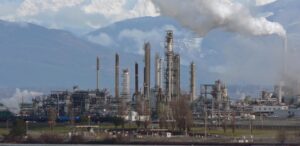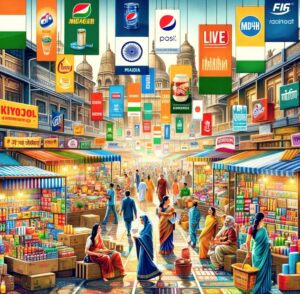1. Business Models and Segments
Reliance Industries Limited (RIL)
- Business Model: A diversified conglomerate with operations spanning oil refining, petrochemicals, retail, telecommunications (Jio), and digital services.
- Segments: Oil to Chemicals (O2C), Retail, Digital Services, Exploration & Production (E&P), and New Energy.
- Future Strategies: RIL is focusing on transitioning towards renewable energy, with significant investments in solar energy, hydrogen, and energy storage. It also aims to expand its retail and digital services businesses.
- Strengths: Diversification across industries, large-scale operations, strong financials, and a robust investment in future technologies.
- Weaknesses: High capital expenditure and exposure to global oil price volatility.
Indian Oil Corporation Limited (IOCL)
- Business Model: An integrated energy company engaged in refining, pipeline transportation, and marketing of petroleum products. It also has a presence in petrochemicals, natural gas, and alternative energy.
- Segments: Refining, Marketing, Pipeline Transportation, Petrochemicals, and Natural Gas.
- Future Strategies: IOCL is investing in expanding its refining capacity, enhancing its petrochemicals portfolio, and increasing its focus on renewable energy and hydrogen fuel initiatives.
- Strengths: Extensive refining and distribution network, dominant market position in India, and strong government backing.
- Weaknesses: Heavy reliance on crude oil imports, regulatory risks, and exposure to price controls on fuel products.
Bharat Petroleum Corporation Limited (BPCL)
- Business Model: Engaged in refining, marketing, and distribution of petroleum products, with a growing focus on natural gas and renewable energy.
- Segments: Refining, Marketing, LPG Distribution, and Natural Gas.
- Future Strategies: BPCL is focusing on expanding its natural gas business, developing renewable energy projects, and enhancing its retail network with digital initiatives.
- Strengths: Strong retail presence, strategic refinery locations, and a diversified product portfolio.
- Weaknesses: Vulnerability to regulatory changes and dependence on crude oil imports.
Hindustan Petroleum Corporation Limited (HPCL)
- Business Model: Primarily involved in refining, marketing, and distribution of petroleum products, with a presence in natural gas and alternative energy.
- Segments: Refining, Marketing, LPG Distribution, and Lubricants.
- Future Strategies: HPCL is focusing on expanding its refining capacity, increasing its LPG distribution network, and investing in alternative energy sources.
- Strengths: Strong brand presence, extensive retail and distribution network, and a focus on innovation in product offerings.
- Weaknesses: Exposure to fluctuating crude oil prices and regulatory risks in the energy sector.
2. Market Capitalization and Financial Performance
Reliance Industries Limited (RIL)
- Market Capitalization: Approximately ₹17 trillion.
- Revenue: ₹9 trillion (FY 2024).
- Net Income: ₹790.2 billion (FY 2024).
Indian Oil Corporation Limited (IOCL)
- Market Capitalization: Approximately ₹1.7 trillion.
- Revenue: ₹7.8 trillion (FY 2024).
- Net Income: ₹431.6 billion (FY 2024).
Bharat Petroleum Corporation Limited (BPCL)
- Market Capitalization: Approximately ₹1.1 trillion.
- Revenue: ₹4.5 trillion (FY 2024).
- Net Income: ₹268.6 billion (FY 2024).
Hindustan Petroleum Corporation Limited (HPCL)
- Market Capitalization: Approximately ₹800 billion.
- Revenue: ₹4.3 trillion (FY 2024).
- Net Income: ₹160.1 billion (FY 2024).
3. Investors and Customers
Reliance Industries Limited (RIL)
- Investors: Wide range of institutional, retail, and foreign investors, with substantial promoter holding.
- Customers: Spanning across retail, telecommunications, petrochemicals, and energy sectors.
Indian Oil Corporation Limited (IOCL)
- Investors: Predominantly government-owned, with significant institutional and retail investor participation.
- Customers: Primarily retail consumers, industrial sectors, and government agencies.
Bharat Petroleum Corporation Limited (BPCL)
- Investors: Government-owned with a mix of institutional and retail investors. The privatization process has attracted interest from global players.
- Customers: Retail consumers, industrial users, and government sectors.
Hindustan Petroleum Corporation Limited (HPCL)
- Investors: Majority-owned by ONGC, with a mix of institutional and retail investors.
- Customers: Retail consumers, industrial sectors, and government agencies.
4. Strengths and Weaknesses
Reliance Industries Limited (RIL)
- Strengths: Diversified operations, leading market position in multiple sectors, and significant investments in future technologies.
- Weaknesses: High capital expenditure, reliance on global markets, and exposure to oil price volatility.
Indian Oil Corporation Limited (IOCL)
- Strengths: Extensive refining capacity, dominant market share, and strong government support.
- Weaknesses: Heavy reliance on crude imports and exposure to regulatory controls.
Bharat Petroleum Corporation Limited (BPCL)
- Strengths: Strong retail presence, strategic refinery locations, and diversified energy portfolio.
- Weaknesses: Regulatory risks, dependency on crude imports, and potential challenges in privatization.
Hindustan Petroleum Corporation Limited (HPCL)
- Strengths: Strong brand presence, extensive distribution network, and focus on innovation.
- Weaknesses: Exposure to regulatory changes, crude price volatility, and challenges in expanding alternative energy sources.
5. Future Strategies and Developments
Reliance Industries Limited (RIL)
- Strategies: Expanding renewable energy ventures, growing digital services, and maintaining leadership in the retail and telecom sectors.
- Developments: Major investments in green energy, including solar power, hydrogen production, and battery storage technologies.
Indian Oil Corporation Limited (IOCL)
- Strategies: Increasing refining capacity, enhancing petrochemicals operations, and focusing on alternative energy projects.
- Developments: New refinery expansions, green hydrogen projects, and digital initiatives in fuel retailing.
Bharat Petroleum Corporation Limited (BPCL)
- Strategies: Strengthening natural gas business, expanding renewable energy projects, and digital transformation of its retail network.
- Developments: New investments in LNG infrastructure, expansion of gas distribution, and increasing focus on solar energy projects.
Hindustan Petroleum Corporation Limited (HPCL)
- Strategies: Expanding refining and LPG distribution, investing in renewable energy, and enhancing digital offerings.
- Developments: Recent refinery upgrades, expansion of LPG bottling plants, and new projects in biofuels and solar energy.
Conclusion
Reliance Industries, Indian Oil Corporation, Bharat Petroleum, and Hindustan Petroleum are pillars of India’s energy industry, each with distinct strengths and strategies. RIL leads in diversification and innovation, IOCL commands extensive refining and distribution networks, BPCL is expanding its natural gas and renewable energy footprint, while HPCL focuses on refining expansion and digital transformation. Together, these companies shape the future of energy in India, driving growth and adapting to new energy paradigms.




